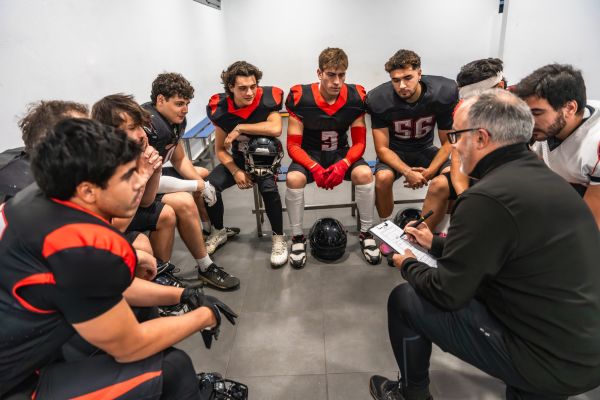Sports physical therapy is a critical component for athletes and active individuals. Whether you’re recovering from an injury or trying to optimize your physical performance, understanding the ins and outs of this specialized therapy can make a huge difference. Let’s dive into what sports physical therapy is, why it’s so important, and how it can benefit you in your athletic journey.
What Is Sports Physical Therapy?
At its core, sports physical therapy focuses on the prevention, evaluation, treatment, and rehabilitation of injuries related to sports and exercise. The goal is to help athletes, whether they’re weekend warriors or elite professionals, return to their sport as quickly and safely as possible. Sports physical therapists are experts in human movement, injury prevention, and recovery, tailoring each program to the unique needs of the athlete.
Focus Keyword: “Sports Physical Therapy”
SEO Meta Description: Discover the benefits of sports physical therapy in injury prevention, recovery, and performance enhancement for athletes and active individuals.
Why Is Sports Physical Therapy Important?
Injuries are inevitable in sports. Whether it’s a twisted ankle during a basketball game or a more serious issue like a torn ACL, injuries can sideline athletes for weeks or even months. Sports physical therapy plays a crucial role in getting athletes back on their feet. But it’s not just about recovery—it’s also about enhancing performance and preventing injuries before they happen.
Benefits of Sports Physical Therapy
- Injury Prevention: Sports therapists assess the body’s movement patterns, identifying areas that are prone to injury and providing exercises to strengthen those areas.
- Faster Recovery: The right therapy program can significantly speed up recovery, allowing athletes to return to their sport sooner and in better shape.
- Pain Management: Therapists use techniques such as manual therapy, massage, and exercises to help alleviate pain without relying on medication.
- Improved Performance: By identifying weak spots and inefficiencies in movement, sports physical therapists help athletes improve their overall performance on the field, track, or court.
Common Sports Injuries and How Physical Therapy Helps
There’s no shortage of injuries that athletes encounter. Some of the most common include sprains, strains, fractures, and overuse injuries. Let’s explore how sports physical therapy addresses these common issues:
- Sprains and Strains: These soft tissue injuries are common in athletes, especially in contact sports. Physical therapists use a combination of rest, ice, compression, elevation (RICE), and strengthening exercises to help athletes recover quickly.
- Fractures: Broken bones often require immobilization, but after a cast comes off, sports physical therapy is essential to regain strength, mobility, and function.
- Tendonitis: Overuse injuries like tendonitis are common in sports that involve repetitive motions. Physical therapists develop rehabilitation plans that include stretching, strengthening, and modifying movements to avoid further strain.
- ACL Injuries: These severe knee injuries often require surgery. After surgery, physical therapy helps restore range of motion, strength, and stability, ensuring a successful return to the sport.
- Concussions: While sports physical therapy is typically associated with musculoskeletal injuries, therapists also play a role in helping athletes recover from concussions by managing symptoms like dizziness and headaches.
The Role of Physical Therapy in Performance Enhancement
Did you know sports physical therapy isn’t just for injuries? Many athletes turn to physical therapists to help improve their game. Here’s how therapy can help you reach new heights:
- Flexibility Training: Increasing flexibility can help prevent injuries and improve overall performance in activities like gymnastics, swimming, and running.
- Strength and Conditioning: Tailored strength programs can address imbalances and weaknesses, leading to greater power and endurance during competition.
- Biomechanical Assessments: Sports physical therapists analyze how athletes move, identifying inefficiencies and making adjustments to optimize performance. For example, a slight adjustment in a sprinter’s form can lead to faster times.
Techniques Used in Sports Physical Therapy
Sports physical therapists use a variety of techniques to treat injuries and improve athletic performance. These methods are often tailored to the individual needs of the athlete. Some common techniques include:
- Manual Therapy: This includes hands-on techniques such as massage, joint mobilization, and manipulation. It helps relieve pain, improve mobility, and restore function.
- Therapeutic Exercises: Strengthening and flexibility exercises are a cornerstone of sports physical therapy. These exercises are designed to target weak muscles, improve balance, and restore coordination.
- Taping and Bracing: In some cases, athletes may need support for an injured area. Taping or bracing can provide stability while allowing for healing and continued movement.
- Electrical Stimulation: This technique uses electrical currents to stimulate muscles, reduce pain, and speed up recovery.
- Dry Needling: Similar to acupuncture, dry needling targets muscle knots and tight areas, helping to relieve pain and improve movement.
When Should You See a Sports Physical Therapist?
If you’re an athlete, whether professional or recreational, there are several scenarios when seeing a sports physical therapist can be beneficial:
- Post-Injury: Anytime you’ve suffered an injury, particularly one that limits your ability to move or play, a physical therapist can help you recover fully and safely.
- Chronic Pain: For athletes dealing with ongoing pain or discomfort, sports physical therapy can identify the root cause and address it through targeted exercises and treatments.
- Performance Improvement: If you’re looking to take your game to the next level, a sports physical therapist can work with you to improve strength, flexibility, and movement efficiency.
How Long Does Sports Physical Therapy Last?
The length of time you’ll need sports physical therapy depends on several factors, including the severity of your injury, the type of treatment required, and your individual progress. Here’s a general breakdown of common recovery timelines:
- Minor injuries: 2-6 weeks
- Moderate injuries (e.g., muscle tears): 6-12 weeks
- Severe injuries (e.g., surgery recovery): Several months
Your therapist will regularly assess your progress and adjust your treatment plan as needed, ensuring you get back to your sport as safely and quickly as possible.
FAQs About Sports Physical Therapy
Q: Can I start sports physical therapy right after an injury?
Yes, it’s generally a good idea to start physical therapy as soon as possible after an injury. Your therapist will guide you through the appropriate steps for recovery, minimizing downtime and reducing the risk of re-injury.
Q: Is sports physical therapy painful?
While some treatments may cause discomfort, the goal of sports physical therapy is to reduce pain, not increase it. Your therapist will work with you to ensure that any pain is manageable and that you’re progressing at a safe pace.
Q: How do I find the right sports physical therapist?
Look for therapists who specialize in sports rehabilitation and have experience working with athletes in your specific sport. It’s also important to find someone who is certified and licensed in your region.
Q: Will I need to continue therapy exercises after I finish my sessions?
Yes, continuing exercises at home is crucial to maintaining the progress made during your therapy sessions. Your therapist will likely give you a set of exercises to perform regularly.
Conclusion
Sports physical therapy isn’t just about treating injuries—it’s about helping athletes of all levels improve their performance, prevent future injuries, and recover faster when injuries do occur. Whether you’re recovering from a sprained ankle or seeking to boost your performance on the field, a well-tailored physical therapy program can make all the difference.
Authoritative Resources (Plain URLs)
- https://www.apta.org/patient-care/interventions/sports-physical-therapy
- https://www.sportsmed.org/aossmimis/SportsMedicineTopics/PhysicalTherapy.aspx
- https://www.mayo.edu/research/centers-programs/sports-medicine/research



